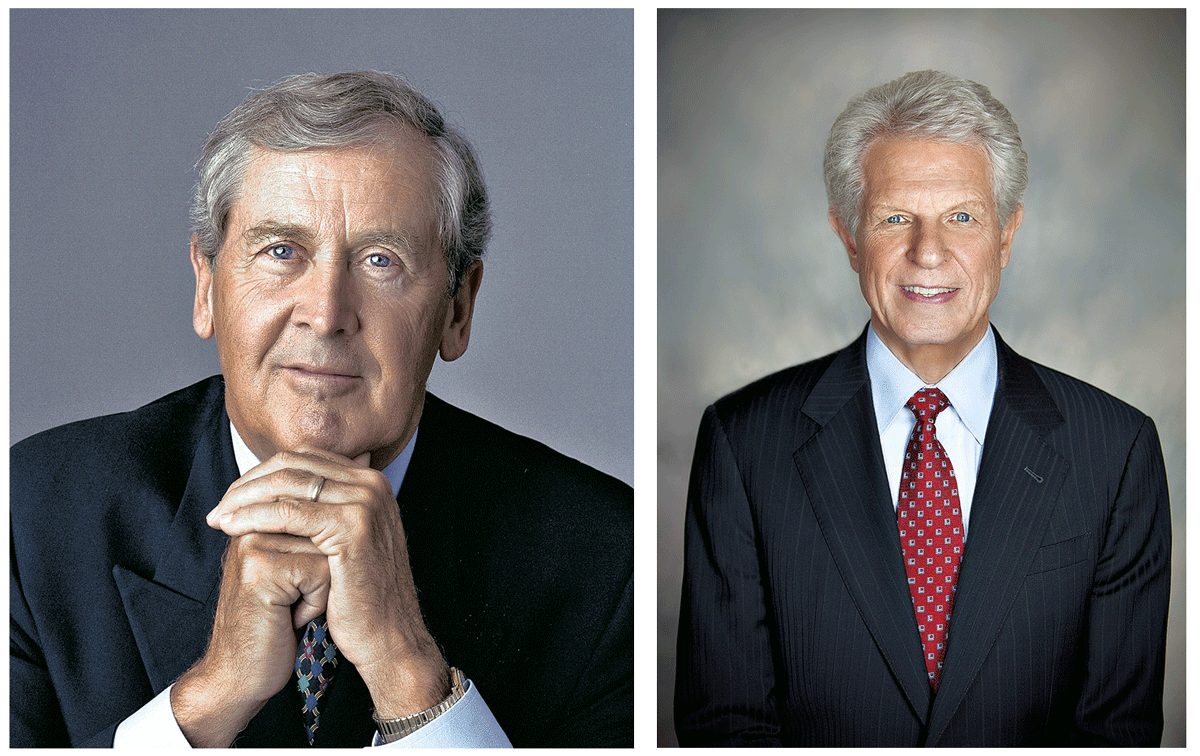A Hilton senior vice president for brand management and marketing was recently asked by a reporter, ‘So what is a Hilton?’
‘People can’t necessarily articulate it,’ conceded the senior vice president for brand management and marketing. The brand is defined, he suggested, “if we collectively give people an experience that says, yes, I’m proud of what it says about me to stay here, it makes me feel good; I’m in charge of my stay.’
‘I’m proud of what it says about me to stay here?’ That’s a Hilton? That’s what differentiates a Hilton from a Hyatt, a Marriott, an Omni, a Radisson, a Ramada, a Sheraton, a Westin or a Wyndham?
Mind you, this is the response from a senior vice president for brand management and marketing of an organization that is spending $45 million a year on advertising.
What is the role and function of marketing anyway? To collectively give people an experience that makes them proud of what it says about them? I thought that was the role and function of the hotel itself.
Sure, you want your product to give people a good experience. Without that, most marketing programs are certain to fail. But beyond a good experience is the need to position the brand in the mind of the prospect.
What’s a Hilton? Or as a matter of fact, what’s your brand? If you can’t answer that question about your own brand in two or three words, your brand is in trouble.
Marketing seems to be going backwards. The objective of a marketing program used to be to make the brand famous. And years ago when there were fewer brands and less advertising volume that strategy worked very well. Consumers tended to prefer the ‘well-known’ brand in every category to the lesser-known brands.
Kleenex in tissue. Heinz in ketchup. Campbell’s in soup. Morton’s in salt.
But today, with an avalanche of advertising, there are many well-known brands in every category. Take toothpaste, for example. Colgate, Crest, Aquafresh, Arm & Hammer, Mentadent, Sensodyne, Rembrandt, Close Up, Ultra Brite and Pepsodent. Each of these brands is well-known. Then which brand do you buy?
The brand that owns a ‘position’ in the mind. Aquafresh for ‘fresh breath.’
Arm & Hammer for ‘baking soda.’ Mentadent for ‘baking soda/peroxide.’ Sensodyne for ‘sensitive teeth.’ Rembrandt for ‘high-end’ toothpaste. Close Up, a second choice for ‘fresh breath.’ Ultra Brite for ‘whiter teeth.’ And Pepsodent for the older crowd who remember when it was one of the best-selling toothpaste brands.
What about the two leading brands, Colgate and Crest? Not only are Colgate and Crest well-known, but the brands are perceived as the two ‘leaders’ in the toothpaste category. The same phenomenon happens in many other categories.
Leadership alone is the best position you can own in the mind. When you are perceived to be the leader, consumers believe you have the better product or service. Because everybody knows ‘the better product wins in the marketplace.’ Not true, but that’s the perception.
Brands go through a life cycle. Unless your brand is the first brand in a new category, you can’t introduce a new brand by claiming leadership. Conrad Hilton opened his first hotel in Texas in 1919. A decade later, he had eight hotels, all in Texas.
By the 1960s, Hilton was the best-known name in the hotel business. Now was the perfect time to answer the most important question in marketing, ‘What’s a Hilton?’
Here it is 40 years later and the senior vice president for brand management and marketing still can’t give a decent answer to that fundamental question.
Powerful, long-lasting brands are built by owning a word in the mind.
What’s a Volvo? A safe car.
What’s a BMW? A car that’s fun to drive.
What’s a Barilla? Italy’s No. 1 pasta.
Of course, there are many brands that own words in the mind without necessarily using those words in their advertising.
What’s a Rolex? An expensive watch.
What’s a Starbucks? An expensive cup of coffee. (Also known as Fourbucks.)
What’s a Red Bull? An energy drink.
It’s astounding, however, how many marketing executives can’t quite grasp the power of this simple branding strategy: own a word in the mind. Maybe it’s too simple a concept to justify the elevated salaries that many CMOs aspire to.
What’s a Wal-Mart? A few years ago the CEO of Wal-Mart’s advertising agency was asked, ‘What would you say is Wal-Mart’s USP?’
Without hesitation, he replied: ‘Value, loyalty, and quality.’
When he heard that response, Rosser Reeves probably turned over in his grave. ‘Value, loyalty and quality’ are hardly unique, as in unique selling proposition. Those are words you might find hand-lettered over a mom-and-pop retail store in any small town in America.
What’s a Wal-Mart? On the outside of every Wal-Mart store are the words, ‘We sell for less.’ In every Wal-Mart advertisement are the words, ‘Always the lowest price. Always.’
What word does Wal-Mart own in the mind? It’s not value, loyalty and quality. It’s ‘cheap.’ Not a bad word to own either. It has made Wal-Mart the world’s largest retailer.
Does ‘cheap’ appeal to everybody? No, that’s why you know ‘cheap’ is a good word to own. Any combination of words that appeals to everybody will never work in marketing. Value, loyalty and quality? Who could ask for anything more? That’s why those words will never work.
Look at Hilton sibling, Hilton Garden Inn. What’s a Hilton Garden Inn? According to the chain’s advertising slogan, it’s ‘Everything. Right where you need it.’
When you claim ‘everything,’ you end up with nothing.
On the other hand, an ‘everything’ claim does sound exciting. Having run an advertising agency, I know that exciting ideas are a lot easier to sell than simple, positioning ideas.
In 1983, we were working for Holiday Inns, when our client decided to get into the all-suite hotel business. The brand name they chose: Embassy Suites.
At the time, there were only two significant players in the all-suite category. Granada Royale with 20 locations, primarily in the Western states and Guest Quarters with 8 locations, primarily in the East.
We were asked to make a presentation. We made two points.
1. The leading all-suite chain will be the first brand in the mind. Move rapidly to dominate the category. To jump-start the Embassy Suites brand, buy the largest chain in the category, Granada Royale. Which they did.
2. Hotel suites have the perception of being expensive and before the launch of all-suite hotels, they were. Embassy Suites, on the other hand, would be reasonable, no more expensive than an ordinary hotel room. Furthermore, the primary benefit of a suite is to have one room for sleeping and one room for working.
Hence our proposed positioning slogan: ‘Embassy Suites: Two rooms for the price of one.’
Which they didn’t do. Our slogan was too simple and not at all creative. Instead they hired the advertising agency that proposed using Garfield, the cat. ‘You don’t have to be a fat cat to enjoy The Suite Life.’
Embassy Suites became a very successful brand, thanks primarily to its early lead in the all-suite category. But it missed an opportunity to reposition traditional single-room hotels with a powerful positioning strategy, ‘Two rooms for the price of one,’ which I believe would still be an effective slogan today. (Many more people stay in traditional single-room hotels than stay in all-suite hotels.)
And today, of course, Garfield has checked out of Embassy Suites and has long since lost his connection with the brand.
I learned a lesson. Maybe you can do both. Maybe you can take a simple positioning idea and ‘package’ it to make it more exciting, like putting bacon around a filet.
When you study some outstanding positioning slogans, you can see how effective the packaging can become.
BMW got a lot of favorable publicity for their legendary 2002 model which combined the practicality of a family sedan with the drivability of a sports cars. They could have positioned the brand as a good ‘driving’ car, but they didn’t. Instead they wrapped bacon around the ‘driving’ idea with the slogan, ‘The ultimate driving machine.’
When Federal Express decided to focus on their overnight business, they could have said, ‘The overnight delivery company,’ but they didn’t. Instead they wrapped bacon around the ‘overnight’ idea with the slogan: ‘When it absolutely, positively has to be there overnight.’
De Beers could have said ‘The hardest substance on earth,’ but they didn’t. Instead they wrapped bacon around the ‘hardest substance’ idea with the slogan: ‘A diamond is forever.’
(Notice the double-entendre, always a good idea in a slogan. If a diamond lasts forever, so will a marriage solemnized with diamond engagement and wedding rings.)
You can go in the other direction, too. One of the most memorable slogans in advertising history is ‘Ace is the place with the helpful hardware man.’
To solve the gender problem and to simplify the message, the slogan recently became ‘Ace: The helpful place,’ which destroys the poetry, the elegance and the memorability of the original.
De Beers did the same. ‘A diamond is forever’ has become ‘Forever, now,’ which not only pulverizes the poetry but also sets up a conundrum. How can forever also be now?
What about Embassy Suites? After thinking about it for the last 26 years, how about ‘Embassy Suites: One room for you, one room for your cat?’
The Blake Project Can Help: The Brand Positioning Workshop
Branding Strategy Insider is a service of The Blake Project: A strategic brand consultancy specializing in Brand Research, Brand Strategy, Brand Licensing and Brand Education





3 comments
Andy Wright
September 29, 2009 at 3:18 am
As long as they’re just words everything needs the bacon. Before experienced the words have to sell the product. Your BMW and FedEx examples are absolutely spot on.
They’re brand positioning’s that should ring true for every part of the brand experience, be unique to that brand and not just become an advertising tagline.
It’s worrying that many brand leaders at major organizations don’t get this…
Brandon R Allen
October 2, 2009 at 12:20 pm
This is such a great reminder to business owners to make sure they truly know what their business is at all times and what it is not. The Wal Mart example is a classic case of someone not thinking about it. Every business owner needs to have this dialed in.
Bob Sanders
November 2, 2009 at 12:18 pm
Great points! In any competitive market how you brand yourself is vital!
In the old management consultant days they used to say in a fractured and fragmented market you only had too options: lower cost (a no win for some) or narrow your focus.
Standing out in a cluttered market space is difficult at best, so thank you for this post. I hope more take your advice!
Bob
Comments are closed.